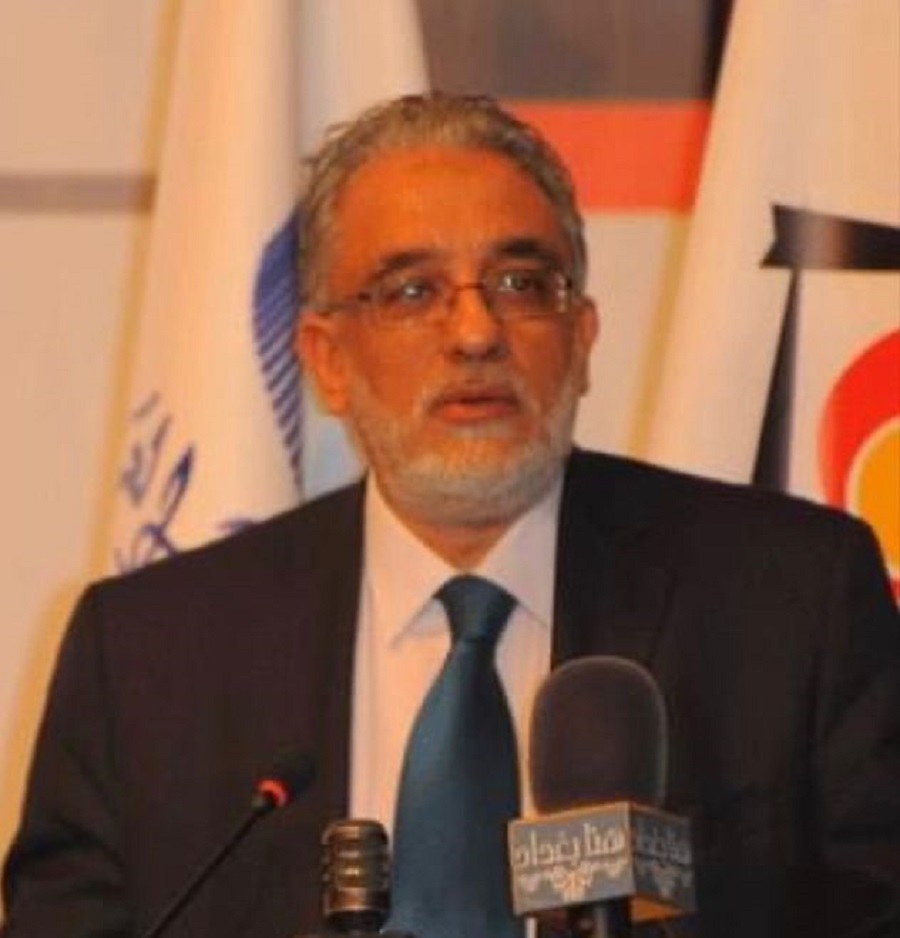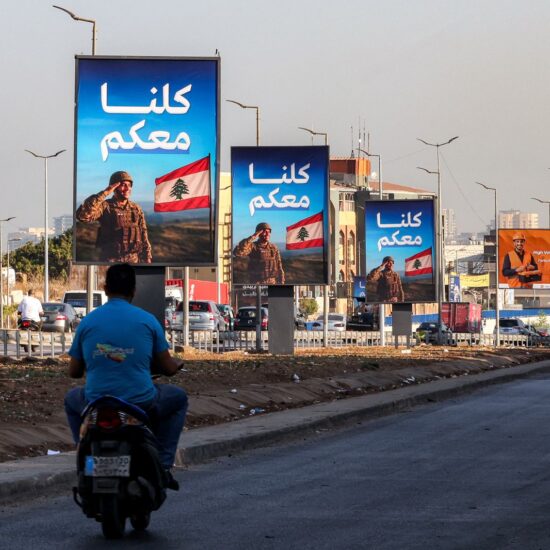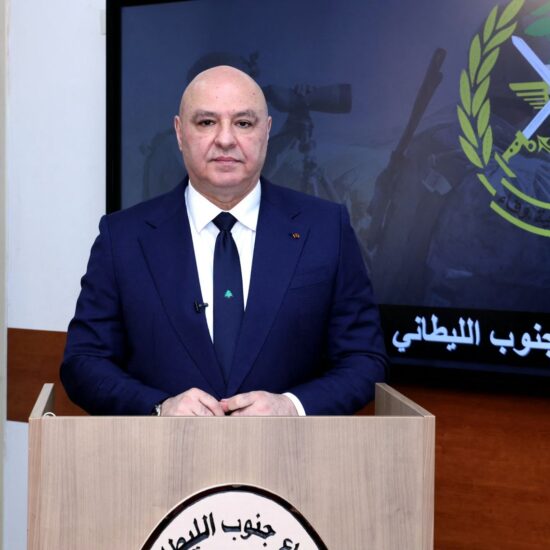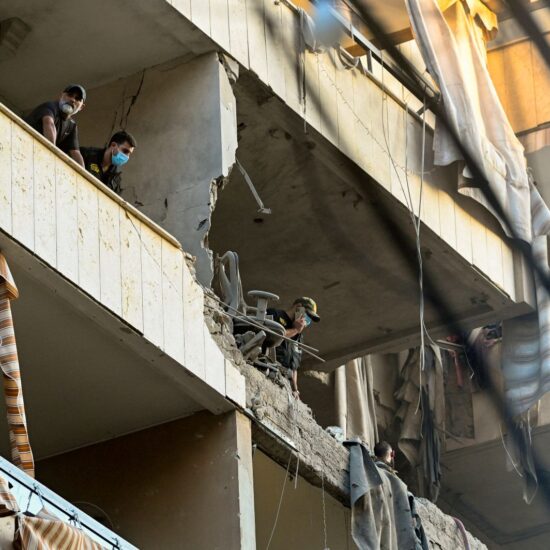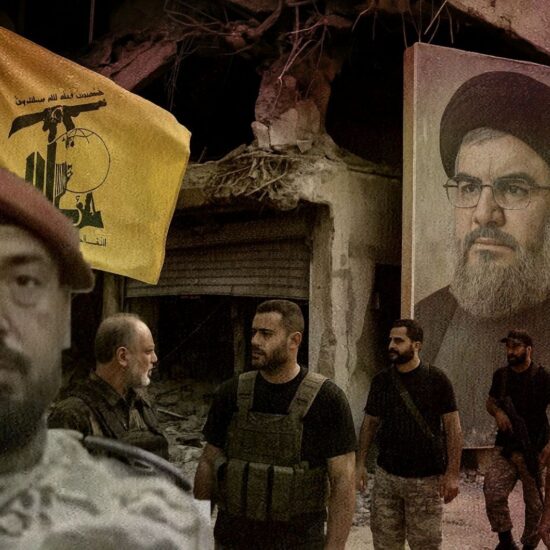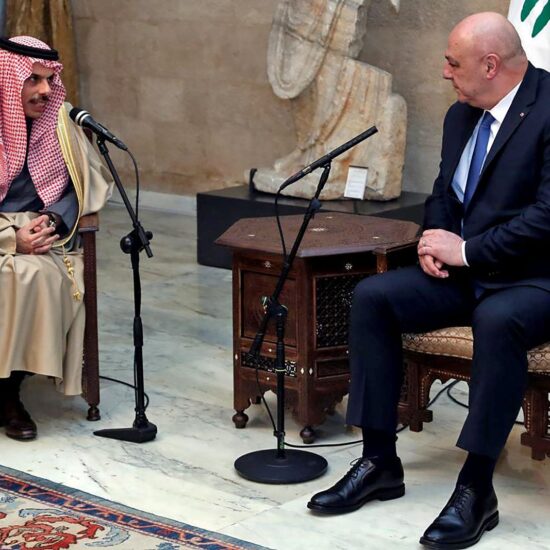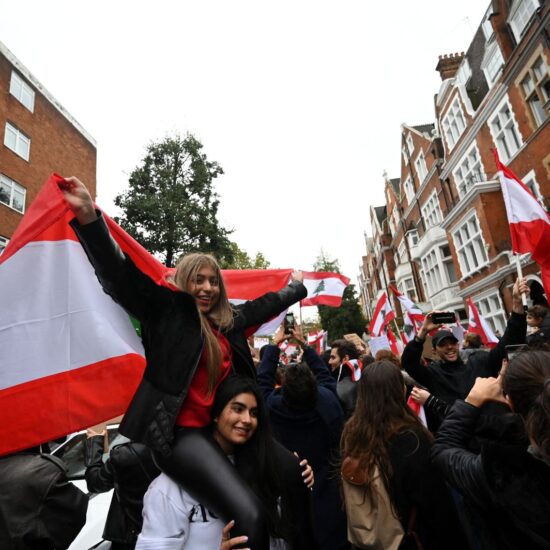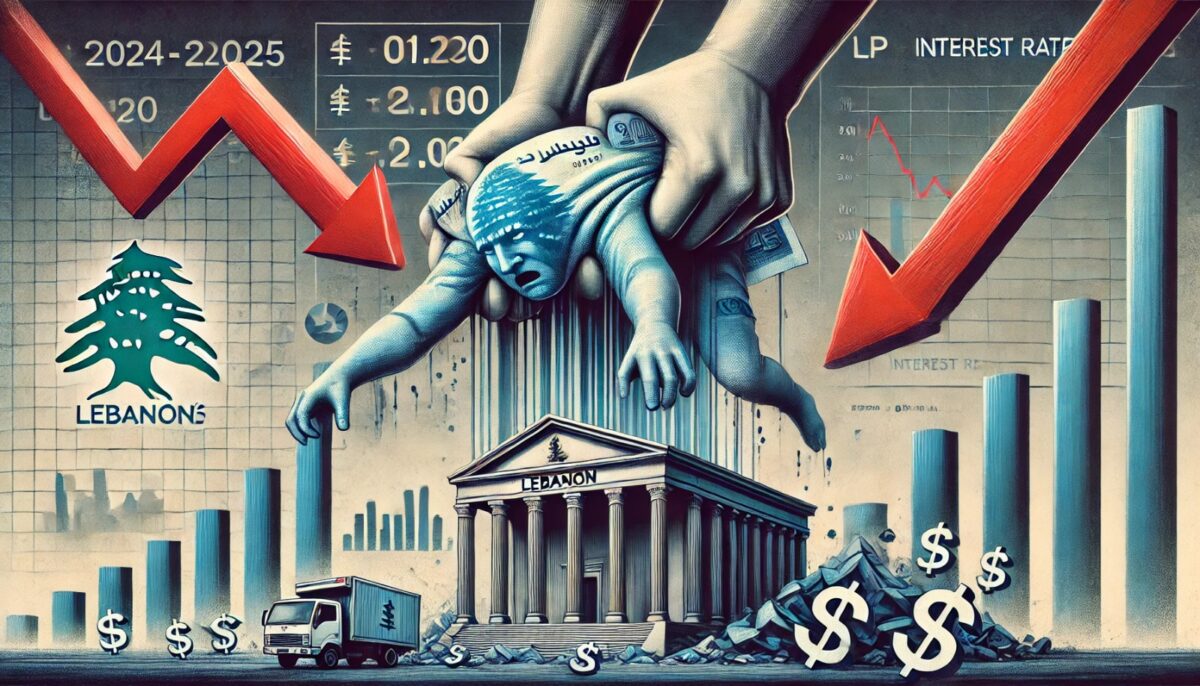
High dollarization and mistmaching banking positions under scrutiny in 2025
A Consensus of economists and bankers directed by NOWLEBANON disclosed pessimism over the new trend the Lebanese pound (LP) overnight rates is taking. This survey denoted that the lack of supply of LP, reaching as high as 140percent in the last week of 2024 reflect severe financial instability and a lack of trust in the local currency, despite positive newscoming and Syria and the coming election of a Lebanese president. The Central Bank’s attempts to stabilize the Lebanese pound by increasing interest rates have made borrowing prohibitively expensive for businesses and households, stifling economic activity, the survey denoted. Imbalances are still denoted in the consolidated balance sheet of banks. On the assets side, currency and deposits with Central Bank represent a high figure of 78% of total assets; they dropped annually by 4.26% to settle at Usd80.64Bln in October 2024. Deposits with the BDL represented 99.92% of total reserves, and decreased by 3.7% YoY, to reach $80.58B in October 2024. Furthermore, vault cash in Lebanese pound declined by 87.91% on a yearly basis to stand at $68.08M by the same period. The drop is attributed to the calculation based on the new official exchange rate of LBP 89,500 per USD.
Although Wassim Mansouri’s governance as acting governor of the Central Bank of Lebanon has had a notable impact on currency stability however levels of currency in circulation is alarming. BDL figures show that currency in circulation outside of BDL, consisting of 0.67% of BDL’s total liabilities, plunged by 84.12% annually to reach $624M by mid December 2024 amid adopting the 89,500 LBP/USD official rate by BDL, though it increased by $67 million in the first two weeks of December 2024. Since his appointment in July 2023, the Lebanese pound has experienced relative stability, with the exchange rate holding around Lp89,500 to the USD after fluctuating widely before his tenure. Mansouri’s approach stopped government financing from the Banque du Liban Lebannon’s Central bank (BDL), which has forced the government Financialto enhance revenue collection and reduce fiscal deficits. Months after this cautious monetary policy aims to mimic a currency board arrangement, though it remains informal and faces challenges due to Lebanon’s high dollarization rate. Despite some successes, concerns persist about the sustainability of these measures amidst ongoing economic instability.
This situation exacerbates inflationary pressures, as higher rates lead to increased costs for imported goods, further eroding purchasing power, an advisor close to the minister of finance said. Additionally, the rapid rise in interest rates raises concerns about potential asset bubbles, particularly in real estate, as speculative investments continue despite deteriorating economic conditions, the source add. Lebanon’s annual inflation rate fell to 15.38% in November 2024, from 15.68% in October 2024, recording its lowest level since March 2020, according to the Central Administration of Statistics (CAS). The decrease resulted from the increase of dollarization rates by businesses and to the stability of the exchange rate especially since August 2023. Meanwhile, the continued escalating political and military tensions in the Middle East and its effect on Red Sea sea-shipping traffic threatens to disrupt supply chains, which will increase shipping costs, and consequently lead to an increase in inflation. In addition, the escalation of the war between Lebanon and Israel that ended on November 27th, 2024 resulted in an increase in prices of several expenditure divisions such as “New Rent”, “Food & Non-alcoholic Beverages”.
Financial Expert Michel Kouzah told NOWLEBANON that the LP usage in the Lebanese economy doesnot surpass 2pct of the actual economic activity out of a conservative estimate of GDP totaling some Usd25bln. This trend will persist in 2025 as people are more inclined to decreade dollarized expenditures he said.
Banker Dan Azzi said that the rate of 45% on the LP is technically not a Ponzi. However excessive interest on the dollar is a Ponzi because the only way to generate greenback in order to pay interest is to acquire new victims. According to him, the BDL is just increasing its LP liabilities, which would increase the demand for LP when deposits mature.
So, one would expect an increase in LP demand by the end of 2024, and thereafter, pressure on the USD/LBP when those deposits are released he believes.
This view is not shared by the General Manager of BankMed Michel Accad who believes that people are misunderstanding the story behind the high interest rates offered by Lebanese banks on their clients’ LP deposits. According to him, the BDL has been running a very tight monetary policy to protect the foreign exchange rate. As a result, the overnight interbank rate had reached 120-140% he said. This has forced the majority of banks, which were borrowing on interbank rates, to raise their LP interest rates to attract LP deposits. By paying an all high 40%, the banks actually are reducing their borrowing costs. Of course, this is not a sustainable measure, but it is the least bad option for now, he added.
The banks are short in LP, Kouzah said. This situation has pushed them to borrow from their clients on such excessive rates as not to liquidate their dollar positions he added.
Some banks are overbought in USD and short in LP, Accad disclosed. The majority are about square, but they have a tenor gap, a mismatching maturity, as their LP deposit liability are of short-term (and clients are paying their taxes in LP), while their LP assets are long-term (eg LL CD and T-bills).
Scenarios for 2025
After some 18 months of monetary stability observed so far driven by the new monetary paradigm of the Central Bank refraining from financing the State, the Lebanese Pound’s exchange rate outlook obviously depends on different scenarios.
At the dawn of a new year characterized by an emergence from war atrocities, a careful analysis imposes itself as to the various scenarios envisaged for 2025 amid hopes that the year would represent a significant inflection point towards what the Lebanese, disregarding their belongings, affiliations and beliefs, aspire to looking ahead, Dr. Marwan Barakat, Group Chief Economist and Head of Research of Bank Audi was quoted as saying.
We have actually envisaged three scenarios for 2025, namely the positive scenario, the middle scenario and the negative scenario, with probabilities of realization of 40%, 40% and 20% respectively, he explained. Having said that, the 2025 outlook emerges with possible upside and downside risks that might represent a net deviation of the outlook ahead from the preset scenarios.
For Barakat the positive scenario assumes the ceasefire persists throughout 2025, with the launch of a widespread reconstruction effort, an end to the political deadlock, the election of a president and the launch of long awaited reforms. In case the conditions of such a scenario materialize, real GDP growth would jump to above 8%, inflation would go down to global levels, BDL reserves would be significantly reinforced and the balance of payments would turn into a surplus of no less than US$ 4 billion, he believes.
The medium scenario also assumes the ceasefire persists throughout 2025, yet with no end to the political deadlock, no presidential elections and no launch of reforms. Under this scenario, real GDP growth would be close to 2%, inflation would revolve around 30%, BDL reserves would stabilize after fallout and the balance of payments would be in quasi-balance, he said.
Lastly, the negative scenario assumes the war re-emerges in 2025 amid an all-out war scenario, with no end to the political deadlock, no presidential elections and no launch of reforms. Under this scenario, real GDP growth would be significantly negative and could reach around -20%, inflation would surge up to 200% at least, BDL reserves would be cut into half and the balance of payments would record a large deficit of no less than US$ 5 billion, he added. The Pound is set to definitely maintain stability under the positive scenario, most likely in the middle scenario but undeniably not in the negative scenario he added.
Within this perspective, the need to restore a confidence imposes on political authorities the imperative challenge of safeguarding the cease fire, promptly filling the institutional constitutional gap, restoring the firm cohesive role of the State and the army, agreeing on answers and solutions to all pending issues and sending the right signals to the business and investment community at large, he sid. Only such a confidence revival can make the Lebanese get out of their political woes, frustrations and distress and bet on a promising economic future, an economic future that concern them all alike. In turn, this calls upon all the Lebanese people to strictly adhere to a firm national integration process, building on their wide pool of means and resources to the benefit of economic reconstruction, sustainable development and growth recovery at large, he added.
Thoughts for a financial sector rebalancing framework
According to Barakat, the financial sector is facing a crisis of systemic nature, caused by public policies that the State is mainly responsible for, as actually well outlined by the Forensic Audit report of BDL recently developed by Alvarez and Marsal. Systematic crisis necessitates distinct approaches beyond those used for ordinary crises or individual banls crisis. As such rises the urgency to adopt an overall economic and financial rescue plan based on a Systemic approach for the Resolution, apt to re-establish the role of the financial sector as the main financial intermediary in the country, which would reduce the dimension of the precarious cash economy, ensure the creation of the economic value added aimed for and support Lebanon’s economic revival. Within this context, Lebanese banks assure their support for a government plan with IMF support apt to help rebuilding confidence in the financial sector, which is a pre-requisite for quickstarting Lebanon’s economic recovery at large.
While any thought plan should undeniably involve banking sector sacrifices, which ought to contribute in the prevailing loss redemption, it should take into account the available capabilities of the banking sector and the Central Bank, rather than burdening the financial sector with solutions that are totally outside their imminent and prospective capacities. The overall cost on banks should not exceed US$ 8.5 billion to be disbursed over a number of years.
According to Barakat, the consolidated balance sheet of banks suggests there is fresh free liquidity of Usd 3 billion in the banking sector today (Usd 5.2 billion in correspondent banks abroad,adding Usd 0.8 billion of cash in vault, less US$ 3 billion of fresh deposits). To this could be added US$ 2 billion of fixed assets, US$ 2 billion of investments and Usd 1.5 billion of Eurobonds portfolio. The aggregation is close to Usd 8.5 billion for banks, with a potential similar burden that could rest on the BDL.
What are the results of a Bail-In approach?
The targeted bail-in is a welcomed way-out option, he said. It yet needs to be implemented in a way not to discourage potential incoming shareholders to commit funds to the banks, and thus not to put at stake the banks’ abilities to raise new capital. Within this context, the conversion of deposits into shares has to be undertaken before the capital increase, in order to ensure to potential shareholders that new capital increases would not be used to cover old losses. The ultimate aim of any rebalancing/restructuring plan should be to delink Banks and State balance sheets. The link between the two balance sheets has been a main driver of the observed financial crisis, in conjunction with other causes and catalysts. In that perspective, the suggested plan should not end by leaving a chunk of banks deposits at BDL. Such deposits cannot be written off because this would contradict the State’s Shura council decision of mid-February. And if they are left, the restructuring aim is not met and the financial system rebalancing effort is back to Square One.


